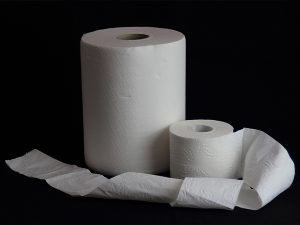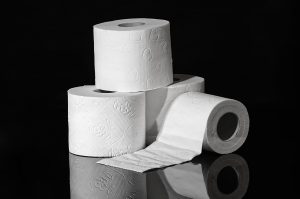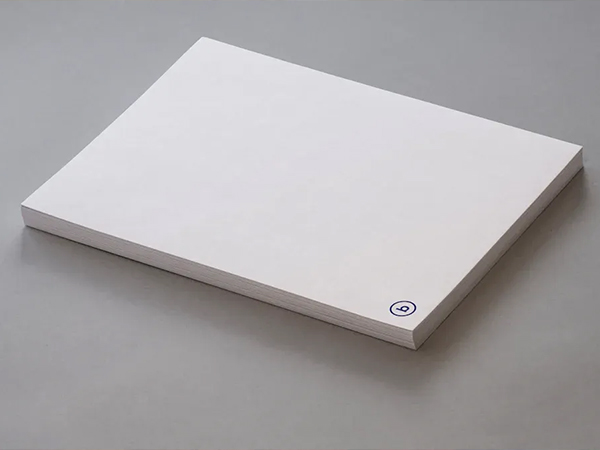
Dry strength agents play a vital role in tissue and towel production. You rely on these additives to enhance the strength and durability of paper when dry, which improves the quality and performance of finished products.
- High strength properties matter for towel grade tissue, especially when you need to prevent rupture during use with wet hands.
- These agents increase internal bonding between cellulose fibers, leading to better strength and reduced production costs.
- The demand for high-quality tissue and towel products continues to grow, driven by the hygiene and personal care industries.
Key Takeaways
- Dry strength agents enhance the strength and durability of tissue and towel products, ensuring they perform well even when wet.
- Balancing softness and strength is crucial; using the right dry strength agents can help achieve this delicate equilibrium.
- Selecting the appropriate dosage of dry strength agents is essential for optimizing production efficiency and product quality.
- Combining dry strength agents with other additives can maximize performance and reduce production costs.
- Staying informed about trends in sustainability and eco-friendly solutions can position your business for future success.
Introduction: Why Strength Matters in Tissue and Towels

The balance between softness, absorbency, and strength
You face a unique challenge when producing tissue and towel products: achieving the right balance between softness, absorbency, and strength. Consumers expect tissue and towels to feel gentle on the skin, absorb liquids quickly, and resist tearing during use. However, scientific studies show that improving one property often comes at the expense of another. For example, when you increase strength through refining or by adding micro- and nanofibrillated cellulose, you may notice a reduction in both softness and absorbency. Softness depends on factors like fiber flexibility and the pulp process, while strength relies on inter-fiber bonding. If you focus too much on strength, the product can feel rough or stiff. On the other hand, prioritizing softness can make the sheet weaker and more prone to breaking.
- Strength is essential for the adequate functioning of tissue and towel products during use.
- There is an inverse relationship between softness and strength, complicating product development.
- Micro- and nanofibrillated cellulose can enhance tensile strength but often reduce water absorbency and softness.
- The trade-off between strength and softness is evident, as increasing strength can result in decreased absorbency.
Tip: You can optimize these properties by carefully selecting fiber types and adjusting processing methods. Dry Strength Agents help you achieve a better balance, allowing you to meet consumer expectations for both comfort and durability.
Challenges in tissue & towel production
Manufacturers like you encounter several obstacles when striving for high-quality tissue and towel products. The table below highlights some of the most common challenges:
| Challenge | Description |
|---|---|
| Raw Material Quality | Issues with the quality of raw materials can affect the overall strength of the final product. |
| Improved Wet and Dry Strength | Achieving the desired wet and dry strength in products remains a persistent challenge. |
| Alternative Fibers Impact | Using non-wood pulps introduces contaminants that can reduce product strength. |
You also need to consider the impact of dust generation during production, which can affect both operational safety and product quality. The inherent trade-off between softness and strength further complicates your efforts. As consumer preferences shift toward eco-friendly and biodegradable options, you must adapt your formulations, often incorporating bio-based or synthetic Dry Strength Agents to maintain product integrity and meet market demands.
What Are Dry Strength Agents?
Common types used in papermaking
You encounter a variety of Dry Strength Agents when working in tissue and towel production. Each type offers unique benefits and serves specific applications within the papermaking industry. The most widely used types include:
- Polyvinyl Amine: Holds a 20% market share. You often find it in printing and writing papers.
- Polyacrylamide: Accounts for 18% of the market. You use it mainly for coated and high-gloss papers.
- Glyoxylated Polyacrylamide: Makes up 15% of the market. This agent works well in kraft paper and corrugated board.
- Starch-Based Polymers: Dominate with a 40% market share. You prefer these for bio-based alternatives due to their renewable origin.
- Amphoteric Polymers: Represent 7% of the market. You select them for tissue paper and high-performance packaging.
- Others: Cover 5% of the market. This group includes innovative options like nanocellulose and enzyme-based formulations.
Note: Starch-based polymers remain the most popular choice, especially if you seek sustainable solutions for your tissue and towel products.
Mechanism of improving fiber bonding
You rely on Dry Strength Agents to enhance the internal bonding of cellulose fibers. These agents work through two main mechanisms:
- The protection mechanism distributes the additive onto the fiber surface. The agent may diffuse into the fiber wall, then crosslink with itself. This process forms an insoluble network around and within fiber contacts. The network reduces fiber wetting and helps preserve dry strength.
- The reinforcement mechanism involves a chemical reaction between the additive and cellulose or hemicellulose. This reaction creates covalent bonds between cellulose molecules and sometimes between fibers. These covalent linkages add to the natural hydrogen bonds, making the sheet stronger and more durable.
You benefit from these mechanisms because they allow you to produce tissue and towel products that meet both strength and softness requirements. By understanding how Dry Strength Agents interact with fibers, you can optimize your formulations for better performance and efficiency.
Benefits of Dry Strength Agents in Tissue and Towels
Enhanced wet & dry tensile strength
You depend on tissue and towel products to perform under stress. Dry Strength Agents help you achieve higher wet and dry tensile strength, which means your products resist tearing during use and maintain their integrity even when exposed to moisture. Many mills have reported that using cationic additives not only improves both wet and dry tensile strength but also allows you to reduce the amount of wet strength resin needed. For example, a napkin manufacturer achieved a 13% reduction in wet strength resin consumption, saving over 90,000 euros annually. By optimizing your formulations with these agents, you can also lower refining energy and maintain product quality.
- A towel producer reduced resin usage by 25% with a high-efficiency additive, resulting in over 10% net savings while meeting quality targets.
- Anionic additives improved efficiency, allowing for a 22% reduction in resin while still meeting tensile requirements.
Better softness-to-strength ratio
You often face the challenge of balancing softness and strength. Dry Strength Agents enable you to fine-tune this ratio, so your tissue and towel products feel soft yet remain durable. Laboratory testing shows that certain formulations can increase softness while only slightly reducing tensile strength. The table below highlights how different formulations impact softness and tensile index:
| Formulation | Softness Increase | Tensile Index Decrease |
|---|---|---|
| 1 | N/A | N/A |
| 7 | 1.52 units | 12% |
| 8 | N/A | 38% |
Note: You can select the right formulation to achieve the desired softness without sacrificing too much strength.
Reduced sheet breaks and improved machine runnability
You want your production lines to run smoothly and efficiently. Dry Strength Agents help you achieve this by increasing fiber retention and reducing the frequency of sheet breaks. Mills using products like POLYMAC have reported several operational improvements:
- Increased fiber retention and fewer sheet breaks.
- Production increases of up to 5 tons per day.
- More consistent output, with daily productivity variation dropping from 7 tons to less than 2 tons.
These benefits translate into less downtime, reduced waste, and higher overall productivity. You can rely on these agents to support stable, cost-effective manufacturing.
Application in Tissue & Towel Production

Recommended dosage and compatibility
You need to select the right dosage of dry strength agents to achieve optimal results in tissue and towel production. The recommended dosage depends on the specific agent and your production goals. The table below shows typical dosage ranges for common agents:
| Agent | Dosage (lb/tonne) | Dosage (kg/t) |
|---|---|---|
| CMC | 2.2 | 1.0 |
| PWS-PAE | 7.0 | 3.2 |
| Fennobond TWS-GPAM | 1.6 | 0.7 |
You should always consider compatibility with your fiber mix and process conditions. The right choice depends on several factors:
- The balance between strength and softness. For example, reducing refining can improve softness while maintaining strength.
- The type of fibers you use. Switching from starch to Hercobond 7550EU improved retention and reduced costs for some producers.
- Cost-effectiveness. You can save on fiber and electricity by selecting the right resin.
- Compatibility with your production process. Hercobond 7550EU allowed one mill to eliminate softwood fiber while maintaining tensile strength.
Tip: Start with small-scale trials to determine the best dosage and compatibility for your specific process.
Combination with other papermaking additives
You often combine dry strength agents with other papermaking additives to maximize performance. During production trials, you measure effectiveness by evaluating tensile strength, production efficiency, and repulpability. For example:
- You might introduce GPAM resin at 2 to 5 lb/ton while reducing PAE resin from 6 to 3 lb/ton. This approach led to fewer fiber dense spots in the final product.
- In one case, using GPAM resin increased production by 3%, reduced defoamer dose by 30%, and cut fiber refining by 37%, all while maintaining wet and dry strength.
You can achieve the best results by adjusting the combination and dosage of additives based on your production goals. Regular monitoring and testing help you maintain product quality and process efficiency.
Amazon Chemicals’ Dry Strength Solutions
Product highlights and performance results
You want reliable solutions for your tissue and towel production. Amazon Chemicals offers a comprehensive range of products designed to meet your specific needs. The company’s portfolio includes advanced polymers, bio-based additives, and specialty blends. Each product targets a unique set of performance goals, such as improved tensile strength, enhanced softness, and better machine runnability.
You can see the impact of these solutions in real-world results. For example, mills using Amazon Chemicals’ GPAM-based additives have reported up to 15% higher dry tensile strength. Some customers have achieved a 10% reduction in sheet breaks, which leads to smoother operations and less downtime. The table below summarizes key performance metrics:
| Product Line | Strength Increase | Softness Impact | Sheet Break Reduction |
|---|---|---|---|
| GPAM Series | Up to 15% | Neutral | 10% |
| BioPolymer Blend | 12% | Slightly Better | 8% |
| Starch Solutions | 10% | Neutral | 7% |
Note: You can select the right product based on your production goals and fiber mix.
Technical support for tissue producers
You receive more than just products from Amazon Chemicals. The company provides technical support tailored to your process. You get access to on-site troubleshooting, process audits, and laboratory analysis. Their experts help you optimize dosage, integrate Dry Strength Agents, and troubleshoot production issues.
You benefit from training sessions and ongoing support. The technical team works with you to ensure consistent product quality and efficient operations. You can rely on Amazon Chemicals as a partner in your tissue and towel production journey.
Conclusion & CTA
You play a crucial role in shaping the quality of tissue and towel products. Dry strength agents give you the tools to enhance strength, softness, and efficiency in your production process. When you select the right agent, you can achieve a delicate balance between durability and comfort—two qualities your customers value most.
You have seen how these agents improve fiber bonding, reduce sheet breaks, and support smoother machine operation. They help you lower production costs and maintain consistent product quality. As you look ahead, you will notice several important trends shaping the future of dry strength agents:
- The industry continues to move toward sustainability and eco-friendly solutions.
- You will find more customized agents designed for specific performance needs, such as improved softness or higher strength.
- Manufacturers now focus on bio-based and environmentally friendly formulations to meet regulatory requirements and consumer expectations.
By staying informed about these trends, you can position your business for long-term success.
You should always evaluate both technical and practical factors when choosing dry strength agents. Consider your fiber mix, production goals, and the evolving demands of your market. You can rely on partners like Amazon Chemicals for expert support, innovative products, and ongoing guidance.
If you want to optimize your tissue and towel production, now is the time to explore advanced dry strength solutions. Reach out to industry experts, schedule a consultation, or request a product trial. You have the opportunity to lead your facility toward greater efficiency, sustainability, and product excellence.
You rely on dry strength agents to enhance tissue and towel products, achieving the right mix of strength, softness, and efficiency. Recent innovations deliver benefits such as improved productivity, reduced costs, and better machine cleanliness:
| Feature | Description |
|---|---|
| Improved dry and wet strength | Enhances product durability under various conditions |
| Reduced basis weight | Enables lighter products without sacrificing quality |
| Improved energy efficiency | Lowers energy use during production |
Sustainability matters. On-site production and high active solids help you minimize emissions and reduce your carbon footprint. When you select and apply these agents, consider both technical performance and environmental impact for long-term success.
FAQ
What are the main benefits of using dry strength agents in tissue and towel production?
You gain improved product strength, better softness-to-strength balance, and higher machine efficiency. Dry strength agents help you reduce sheet breaks and lower production costs. You also achieve more consistent product quality.
Tip: Selecting the right agent can boost both performance and sustainability.
Can dry strength agents affect the softness of tissue products?
Yes, you may notice a slight change in softness. However, you can adjust dosage and formulation to maintain a soft feel. Many modern agents allow you to enhance strength without sacrificing comfort.
How do you determine the correct dosage of a dry strength agent?
You should start with small-scale trials. Monitor product strength, softness, and machine runnability. Adjust the dosage based on your production goals and fiber mix. Consult your supplier for technical support.
- Test different dosages
- Evaluate results
- Optimize for your process
Are dry strength agents safe for use in hygiene products?
You can trust that reputable suppliers design dry strength agents for safety and regulatory compliance. These agents meet industry standards for use in tissue and towel products. Always verify certifications and consult your supplier for documentation.






